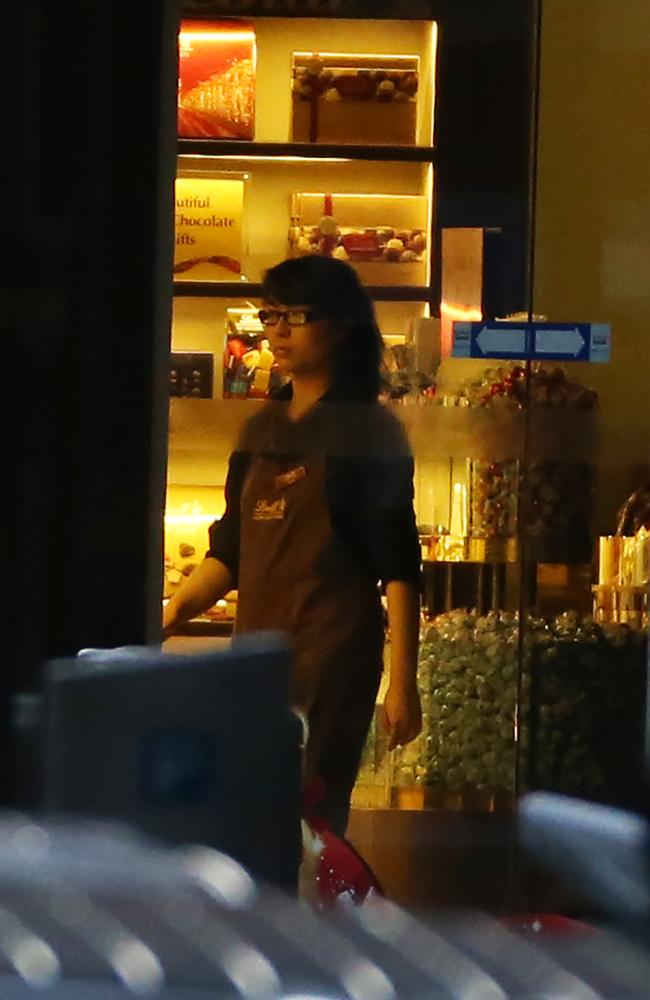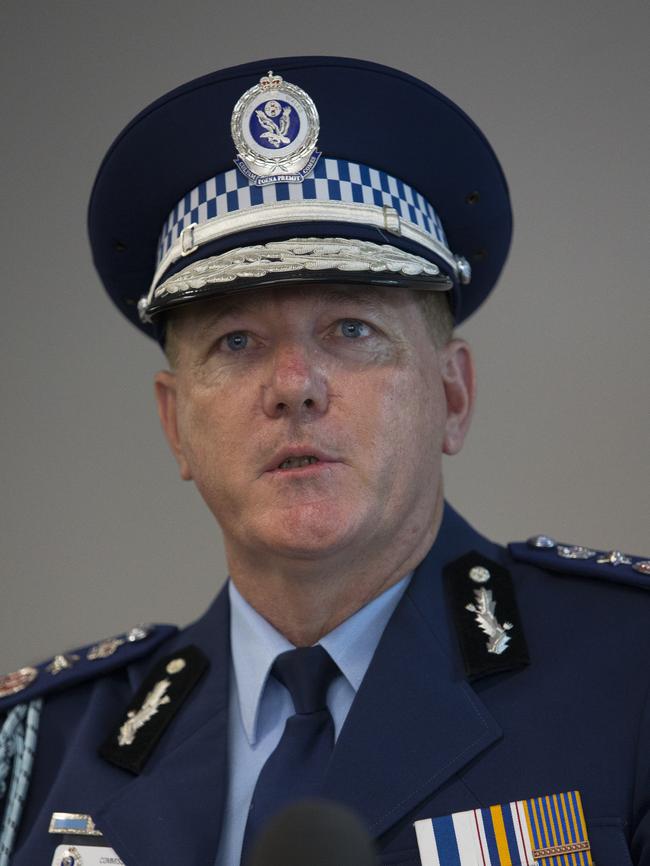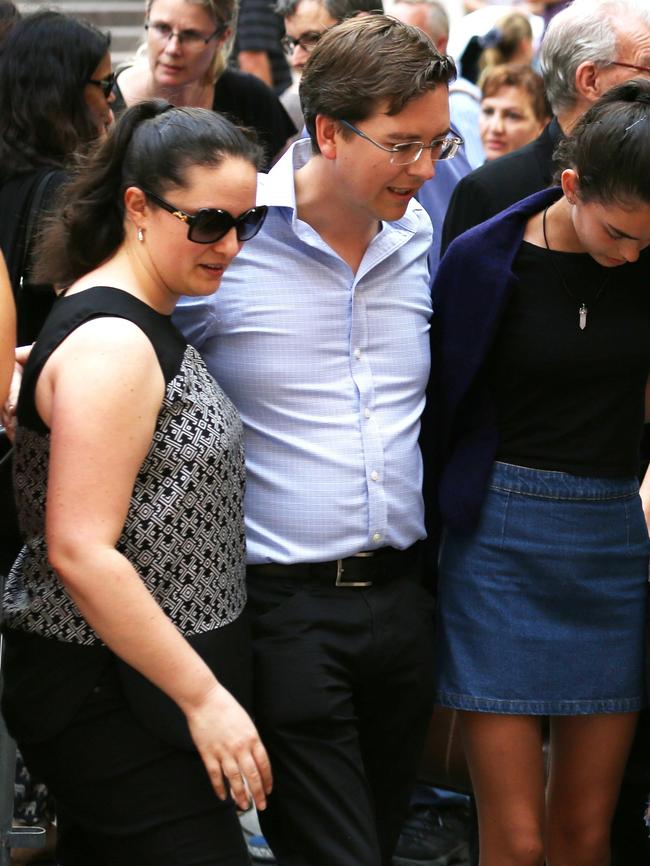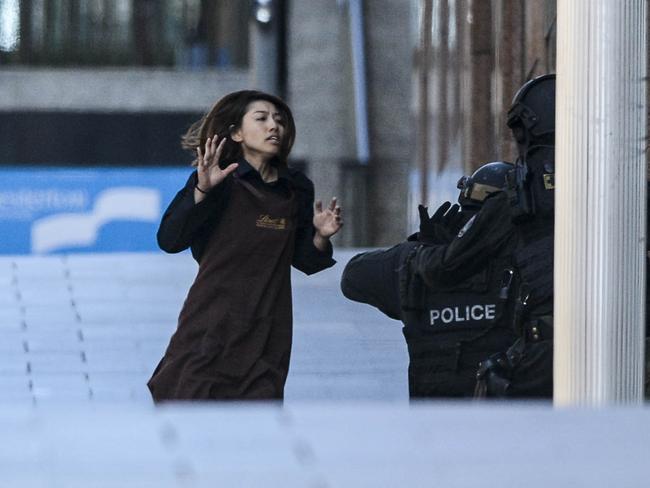AFTER using Tori Johnson to make the original triple-0 call, the gunman — still unknown to police — turned hostile towards the quiet manager.
His first outright threat was to say he would shoot Johnson if he had lied that none of the doors could be opened from the outside.
Next, snubbing Johnson, he told Louisa Hope: “You can be my secretary.”
At 10.01am she called authorities to repeat his demands for then-Prime Minister Tony Abbott to take part in a live ABC radio debate.
COPS’ FURY AT LINDT SIEGE INQUEST ‘WITCH HUNT’
In return, the gunman would release hostages.

Working out of the back of the 4WD, it was 10.42am before police negotiators made their first call into the cafe — but it was to no avail.
The mobile number Johnson gave out in his first call went straight to voicemail.
At 11.02am, a hostage believed to be Fiona Ma was allowed to answer this Samsung and pass on the message the gunman was becoming increasingly irritated he had yet to hear from Abbott.
The PM was personally briefed by Police Commissioner Andrew Scipione with an update on the situation before the police commissioner headed to the State Crisis Centre at the Police Operations Centre.
INTERACTIVE: INSIDE THE LINDT CAFE
Along with his forward commander, superintendent Allan Sicard, Assistant Commissioner Mick Fuller thought it would be worthwhile at least considering letting the gunman talk to the ABC.
And Fuller thought he had the backing of the head negotiator “Graeme” to make the deal “as a sign of good faith”.
But when he passed Fuller’s deal on to the team leader of the negotiators, “Reg”, who was dealing with the actual talks, Graeme included a crucial caveat: in his opinion it was the wrong thing to do because it was against the government’s policy of not making concessions to terrorists.

Fuller’s offer was never passed on to the gunman. No hostages were released.
As the siege dragged on, counter-terrorism squad chief Mark Murdoch convened a scene-changing teleconference for the top brass.
He briefed Scipione, Deputy Commissioner Cath Burn (who had charge of special operations including counter-terrorism and the TOU), acting Deputy Commissioner Jeff Loy, Assistant Commissioner Mark Jenkins and others that the Lindt cafe siege should be treated as an act of terrorism.
Scipione approved the activation of Operation Pioneer and Strike Force Eagle, both protocols which provide a clear and specific framework for responding to terror.
It was now 11.15am.
Fifteen minutes earlier, the police had been contacted by the Australian Defence Force offering help if needed. It was — but only up to a point.
The ADF has no special rights to shoot or use force in domestic situations and they have never operated on home soil.
They have to be invited by police to take over. This wasn’t going to happen.
3D RECONSTRUCTION OF LINDT CAFE
Once the siege had been declared a terrorist incident, Murdoch replaced Fuller at the POC while Sicard was replaced at the forward command post by another superintendent, whose name has been suppressed.
A 34-year police veteran, Murdoch is best known for being in charge of the 2011 collar bomb hoax when then-teenager Madeleine Pulver had a fake IED strapped around her neck for 10 hours in Mosman.
Murdoch drew up a list of priorities; safety of the hostages, getting direct contact with the gunman, understanding his demands, wanting to know more about the bomb in the backpack — and identifying the offender.
For more than a year, Penrith-based Detective Senior Constable Alan Thompson had been working on the murder case of a 30-year-old mother-of-two who was stabbed in the back and set on fire on the landing outside her ex-husband’s Werrington unit in April 2013.


Just before midday, Thompson rang the officer in charge of that murder investigation, Detective Senior Constable Melanie Staples.
They were both sure the gunman was the man they had charged with ordering his girlfriend to murder the young woman. He was Man Haron Monis, his girlfriend Amirah Droudis and the victim his ex-wife.
Nobody knew the real Monis better than Staples.
She had been in the back of Penrith Local Court a year earlier getting angrier by the minute as she watched the prosecution botch what should’ve been an open and shut bail case.
Staples had filled 23 pages with notes in court as the Iranian-born self-styled spiritual healer and sheik and his girlfriend, hairdresser-turned-radical Droudis, applied for bail.
It was bad enough that magistrate William Pierce granted them both conditional bail, citing the “weakness of the Crown case”.
But what made it more frustrating was the prosecutor had not given the magistrate a statement Staples had specifically prepared.
It included the fact Monis had committed the offence while on bail for the federal offences of sending offensive letters to the families of dead Australian soldiers, that he was a Rebels bikie associate, a danger to victims and was planning to possibly flee to Malaysia.

As soon as she realised who the gunman was, Staples was on the phone to her bosses at the homicide squad.
It was about 2.45pm when Murdoch was told Monis’s identity had been confirmed.
At lunchtime, the forward command post had been moved to the NSW Leagues Club. Now, instead of the back of a 4WD, the negotiating team was working out of a tiny makeshift office at the club where they still had only a landline, a mobile phone and three dictaphones.
They didn’t have access to the police database. Significantly, they had still not been able to talk directly to the gunman.
They were only communicating through hostages.
While all the information about Monis was in the police computer system, in another breakdown in communications, the forward commander was never told about the charges he faced or his criminal history.
The forward command post did not appear to have access to either the electronic log for the operation or the police database iSurv.
On top of that, the information-sharing was hampered by different databases within the police. Specialist squads like homicide and counter-terrorism have systems that cannot be accessed by others.
The police could not access the information the AFP or other intelligence agencies held on Monis and vice versa.
In the same vein, just days before the siege, Monis had stepped up his radical pronouncements on his Facebook page, where he had vowed to fight the “oppression and terrorism of USA and its allies including UK and Australia”.

Between December 9-12, the National Security Hotline received 18 calls complaining about the Facebook posts.
Six of them were referred to the NSW Police and investigated by the force’s Terrorism Intelligence Unit.
Inexplicably, the head of the TIU, tasked with providing strategic and tactical intelligence support at the police command centre and identifying the gunman, was unaware of the flood of calls to the hotline or that his own officers had investigated some of them.
As police were digesting the information that Monis was the man with his finger on the trigger, the first hostages escaped from the cafe, shaking up the false calm that had descended.
Crouching down low, at 3.35pm, the oldest hostage, 83-year-old John O’Brien, hit the green button and ran for it as the main doors opened.
Stefan Balafoutis followed him, squeezing through the gap.
And Paolo Vassallo seized the distraction to run through the kitchen and out the fire door into Phillip St.

Driven by emotion and anger, Monis ranted at his remaining prisoners: “This s ... cannot happen. White shirt (Balafoutis) always had his eyes open. I should have shot him when I had the chance.”
In a remarkable show of bravery, Jarrod Morton-Hoffman took the tension out of the situation. Monis thought police had sneaked in to help the escape.
“The police didn’t come in, the police didn’t come in. They ran out on their own,” the teenager said.
After he had managed to calm Monis down, the gunman credited him with saving lives.
“Everyone thank Jarrod. I would have shot someone,” Monis said bizarrely.
About an hour earlier, Vassallo, 36, had tried to convince Fiona Ma to join him and flee through the fire exit.
THE AFTERMATH
At 19, Ma was one of the youngest hostages and Monis appeared to trust her.
Calling her “Fio”, she had the job of providing food and water and accompanying the hostages when they wanted to go to the toilet.
When he wanted the toilet himself, he urinated in a bottle and she emptied it into the toilet.
When he wanted a cigarette, he blew the smoke into a bottle so as not to set off the fire sprinklers.
Johnson had hidden a mobile phone from Monis and made frequent trips to the toilet where he was secretly sending messages to the outside world.
Accompanying him on one trip, Ma whispered to him about Vassallo’s plan and Johnson said either the chef was stupid or his plan was.
As much as she wanted to get out, Ma was scared that Monis would make good his threat and kill someone if there was an escape.
Even a hug and reassurance from Vassallo could not move her.
Since then, the chef had just been biding his time.



After they ran into the arms of the TOU officers, the hostages were taken to the NSW Leagues Club for health checks and a debriefing.
After almost six hours of watching Monis and listening to his rants, Vassallo was certain Monis had no intention of leaving the cafe alive.
“He’s not walking out. Unless you take him out, he’s not walking out. He’s got no f ... ing intention,” Vassallo told police.
His warning was dismissed by the psychiatrist used by police, who had arrived at 1pm to act as an adviser.
The psychiatrist thought the chef “highly excited”.
“My recall is that I didn’t listen to him terribly much because he was babbling,” the psychiatrist, who cannot be named, told the Lindt cafe siege inquest later.
As the siege stretched on, he told the commanders his opinion was Monis was “grandstanding”.
Still unable to talk to him direct, the negotiators decided to take a gamble and tell Monis they knew who he was.
The psychiatrist believed that once he realised he had been identified, it would end his “fantasy” of being an unknown IS operative.
During their discussions, at 4.57pm, April Bae and Elly Chen crawled out from under a table where they had hid after the earlier escape, quietly opened the doors into the Martin Place foyer and slipped out. There were now 13 hostages left.
At 5.13pm, negotiator Peter, a senior sergeant, picked up the phone and called the cafe. It was answered by Marcia Mikhael.
“Can I speak to Sheik Haron?” Peter asked.






Add your comment to this story
To join the conversation, please log in. Don't have an account? Register
Join the conversation, you are commenting as Logout
Iconic dog track faces axe in mega housing plan
One of Sydney's most valuable inner-city sites faces an uncertain future as the government weighs up thousands of new houses against preserving a 90-year dog-racing tradition.
‘Such a lovely pair’: Tragic end to couple’s trip of a lifetime
Livia Muhlheim and Lukas Schindler struck everyone they met with their happy, friendly demeanour as they enjoyed their trip around Australia. But their happiness was cut short by a brutal shark attack.